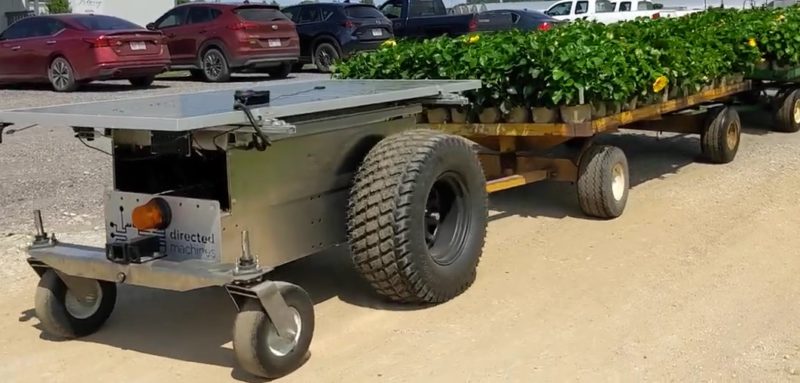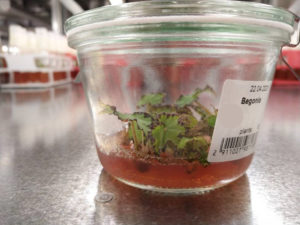
The Times, They Are A-Changin’
The ancient philosopher Heraclitus said, “We both step and do not step in the same rivers. We are and are not.” Explaining change in the context of dipping one’s toe into the living waters of a river is an indictment of the river meandering through the unique topography of the land.
The thriving horticulture world, both academic and industrial, has seen its share of changes over the years. The industry has felt its way through changes in technology, the labor force, globalization, consumer awareness and participation, and now more than ever, political uncertainty and climate change.
Change is both simple and complex, quick and sometimes excruciatingly slow, inexpensive and a checkbook buster, exciting and terrifying. How we as an industry have evolved over the years is simply the beginning of the bold, bright changes the future holds. Studying the history of gardening and horticulture in the U.S. is fascinating. Advancements in technology, especially the science of plant breeding and increasingly automated operations, are even more striking, when comparing today with generations of the past.
DEATH, TAXES … AND CHANGE
Metathesiophobia is the fear of change. People are naturally hesitant to change, hesitant to try something other than “the way we’ve always done it.” Death and taxes are not the only two constants. It’s time we throw change in there, too. Change is still going to be frightening sometimes, but our industry can make moves to create the landscape, both literally and figuratively, to ensure longevity and success.
It is time to look toward the future, to changes on the horizon. Where will we position ourselves as an industry? Where will we have our voices heard to affect change positively? From our vantage point at J. Berry Nursery, here are a few of those areas, some having a great deal of overlap, technology which affects labor force, climate change which affects consumer habits and so on. Change is here and accelerating.
AUTOMATION AND TECHNOLOGY ADVANCEMENTS
Automation will continue to become a hotter and hotter topic in academic and industrial circles as technology improves and becomes more reasonably priced and attainable by a larger cross-section of producers. Just in the past few years, automation at the beginning of a plant’s journey to consumer garden has changed how many nurseries propagate and is broadening the thought process of approaching one task at a time to a nursery-wide automation scale.

New crops and their specific regulations have created opportunities for technologies and growing operations never seen before. Cannabis is not just being grown solely indoors, but under a new sort of security most nurseries never thought necessary or possible. Additionally, the cannabis industry has strained certain segments of the supplier market, creating shortages in building materials, operational needs and even labor.
Artificial intelligence now allows nurserymen to monitor plant progress while drones and radio frequency identification (RFID) tags are no longer the toys we remember from trade shows past, imagining them out of reach for much of the industry, but they are tools of the here and now.
Propagation will shift toward tissue culture where working conditions in laboratories are more desirable than traditional nurseries. Robotics and biological sanitation eliminate environmental variables that could cause loss and allow laws worldwide to adapt to clean plants that could move globally. Still a large investment for most producers, tissue culture propagation may become a necessity as opportunities grow or regulations change.
Skilled and unskilled labor costs continue to rise. With over a half a million estimated nursery jobs in the U.S., the current labor market is making it more difficult for many nurseries to become and remain fully staffed. Temporary worker programs have experienced restructuring, delays and increased scrutiny under past presidential administrations while the present politics of illegal immigration and undocumented migrant workers have become markedly polarized.
As the industry looks to offset the potential loss of unskilled labor, technological advancements in automation, broadly and task-based, offers some relief but also increases the need for skilled labor to maintain often complicated new equipment. Lean and lean flow metrics have improved efficiency and reduced touches in nursery production but require a similar pledge to technology. Uninspired commitment to lean principles can result in a disjointed process, which could negatively impact production and morale with nursery employees. The future of the nursery workforce is a mix of highly skilled workers with technological backgrounds and efficient, competent management which can lead labor processes and execution despite the changing political landscape.
A SHIFT IN COMMUNICATION
The changing attitudes toward how Americans shop, both wholesale and retail, have impacted the industry in a variety of ways. The days of sending administrative staff to trade shows to do little more than take orders have mostly ended thanks to technology and e-commerce. This is creating new opportunities for seeing and touching future offerings, building, and cultivating relationships and taking benefits of education opportunities at trade shows and events. Trade show attendees and exhibitors can now be more focused on specific objectives and more time can be spent on knowing who you want to do business with trust and reliability rather than simply writing orders as in the past.
Digital media and the internet allow exhibitors to create a presence and reputation while not so long ago, decades of leg work might have been required to achieve the same goal. Future trade shows will likely become even more virtual, allowing information and education to flow even more freely across the industry. The professional trade organizations are now more in touch thanks to email, social and digital media, e-learning, and the lines of communication more easily accessible for everyone. Business organizations have adapted to the changing technological capabilities and can now disseminate information on larger scales and more quickly to professionals and consumers.
Rapid urbanization has changed the way consumers shop and how producers bring items to market. While the first nurseries appeared a couple hundred years ago, the current ways consumers connect with producers is quite new. Big box retailers have only been offering wide selections of plants for the past 30 or so years, and now the internet and e-commerce have altered previous brick-and-mortar and catalog sales.
Urban dwellers have necessitated a new retail where plants are delivered potted in a decorative container with virtually no after delivery work on the part of consumers looking for a finished product immediately. Online purchasing by consumers has been the latest tectonic shift in the way plants are acquired.
Many people looking for plants for their home are now focused on décor over gardening, altering the traditional offerings of some nurseries and retailers. Brick-and-mortar shoppers are likely using the internet as inspiration long before they step foot on to a nursery or retail garden center. Online nurseries are growing quickly with large capital pouring in from investors seeing the trend lines and shopping habits of today’s home gardeners. Shipping methods have improved, allowing once easily damaged live goods to be transported across the country through a variety of delivery methods. Online offerings are greatly expanding consumer choices of where and what they can purchase.
Advancements in communication and travel have made our global community immeasurably more reachable. Nurserymen and women around the world can share data, successes and failures, and reach new markets more easily than ever. Investment into emerging economies is on the rise as well as opening doors in other major world economies for producers in the United States.
CLIMATE CONCERNS
Perhaps the one area of significant change where there is little debate is climate and global warming. Scientists around the world have been sounding the alarm for years about reducing carbon footprints, concerns about sea-level rise and its connection to an increasingly warming planet.
Many nurseries and producers around the country and world have already begun taking steps to be a more sustainable and responsible climate partner. Water-wise systems, reducing fossil fuel usage and a push toward sustainable packaging and containers are not always easy changes, but becoming ever necessary as the evidence of human-impacted environmental change reaches a crescendo.

As plant producers, we rely on a certain amount of weather and climate stability to produce our products. Hotter days and longer summers are causing growers to reevaluate some of their offerings. The push toward tropical varieties in areas once thought to be off-limits are allowing for exciting new markets.
The industry must remind consumers that plants are a partial solution to environmental change and global warming. Advocating plantings of many sorts convinces consumers they can help cool urban heat islands, provide shade and housing for animals, remove toxins from the air and supply life-sustaining oxygen for people. Climate change has the potential to alter the horticulture industry in a way no other outside threat has before.
AND THEN THERE WAS COVID
Fortunately, the pandemic was good for our industry … mostly. People who needed therapy found it in gardening. People who could be out in the open air could find it in the garden. People that need clean air could find it in their garden or with plants in their home. Many learned to grow food and create beauty.
Let us keep it going. It is so much up to us. Give them the plants that they can succeed with. Help them with providing great advice. Teach them now because they want to learn. The public is very much wanting to learn and be part of an environmental solution. Be creative so they can be creative and successful. Let us sustain the gardening momentum. Your generation’s day has come. Are you up to it?
Our industry relies heavily on one another to succeed. While we may compete with one another, trying to have the brighter flower or shinier pot, our industry can remain united to speak truth to those unwilling to protect our environment, lead by example in instituting positive change in regulation, land and water use and sustainable growing practices. The future is bright, and change is coming, but we must remain diligent as partners going forward in uncertain times.
Now an optimistic note: We must decide how change is going to steer our industry and our business decisions going forward. The choice is quite simple, actually. “The past is a foreign country; they do things differently there,” is a great quote from the novelist L.P. Hartley. We’ll do things differently in the future, too. After all, the times, they are a-changin’. As Shakespeare wrote “Act well your part, there all the honors lie.”









 Video Library
Video Library 


















